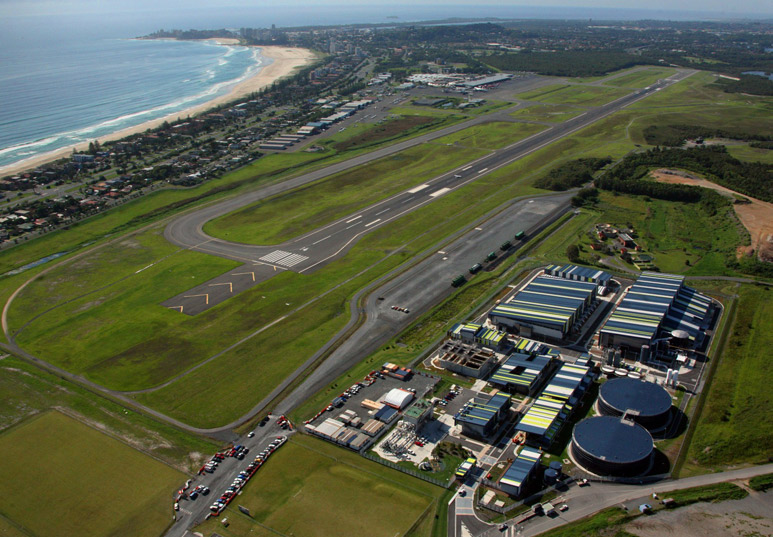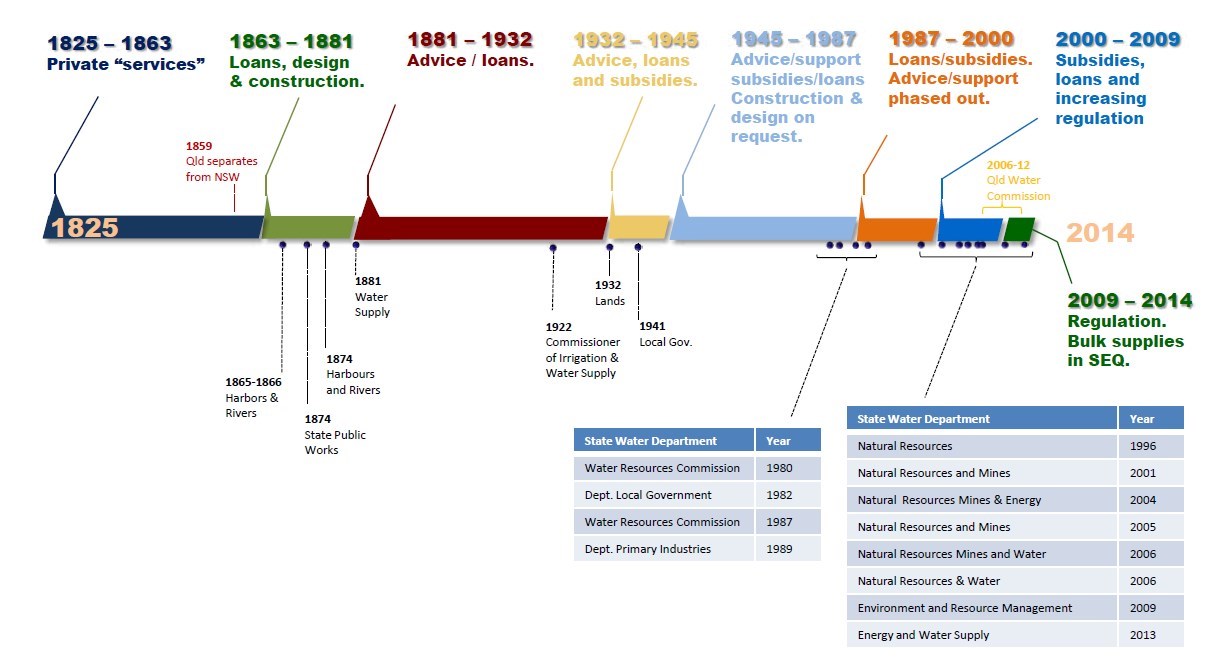Flashback Fridays: The State as Regulator

The first decade of the new millennium was a turbulent and uncertain time for the State Government. In the new role of regulator, the Queensland Government started with a base of well-established legislation but proceeded to introduce a raft of, often duplicative, statutory plans. These included:
- Strategic Asset Management Plans (2000),
- Customer Service Standards (2000),
- Drought Management Plans (2005),
- System Leakage Management Plans (2005),
- Outdoor Water Use Conservation Plans (2008),
- Recycled Water Management Plans (2008),
- Drinking Water Quality Management Plans (2008),
- Local Government Asset Management Plans (under Local Government Act 2009),
- Total Water Cycle Management Plans and Trade Waste Management Plans (under the Environmental Protection Policy Water 2009),
- Sewage Overflow Abatement Plans and Integrated Environmental Management Systems for large sewage pumping stations (EPP Water 2009).
Many of these regulatory approaches (e.g. a drinking water quality framework) were long overdue, but it is hard not to interpret this period as a State Government unsure of its role and in search of its appropriate place in the new world it had itself created.
During the same period the State Department responsible for urban water changed names no less than six times (see figure timeline below), no doubt creating a mini-boom for the printers of business cards and State signage. While some of these changes were fairly cosmetic, others involved significant restructures. At the time of writing (2013) the State was considering repealing many of the legislative requirements created over the previous decade.

One of the key drivers of the State’s rapidly changing role was the ‘millennium drought’ which lasted from 1997 to 2009. Many townships including a large proportion of the capital city were in real threat of running out of water. The response of the State and of Local Governments was slower than might be expected of structures more than familiar with droughts and flooding rains. The State’s response, when it did come, was autocratic and tinged with a hint of panic. In the circumstances, this was not necessarily uncalled for.
As well as the legislative ferment, the State’s response included unprecedented expenditure on urban water and restructuring of the industry in South East Queensland (SEQ). Unfortunately in the haste and fear, the State’s response did not take on advice of the industry itself which could have prevented some of the unnecessary excess.
The institutional changes in SEQ commenced with the creation of a Water Commission in 2006 and proceeded with Local Government Amalgamations in March 2008 which reduced 17 council water service providers to 10, each with water and sewerage responsibilities and many also managing bulk water supplies. Then, in July of the same year, all bulk water assets were mandatorily transferred to three new state-owned statutory authorities (Seqwater, LinkWater and Water Secure) and the entity known as the SEQ Grid Manager was also created.
After much debate and several false starts, in 2010 three joint council-owned statutory authorities (Unitywater, Queensland Urban Utilities and Allconnex Water) were created to take over all distribution and retail services in three sub-regions of SEQ.
During this period the State invested heavily in urban water infrastructure in SEQ, including a desalination plant, three advanced wastewater treatment plants, new and expanded water storages and 200 km of bulk water pipelines to transfer water around the region. The largest centre of population in the State, rightly concerned about water scarcity, dramatically reduced household water use and was treated to front page headlines in the region’s Courier Mail for three years which boasted the latest expenditure on drought-proofing SEQ. Elsewhere in the state many communities watched with concern as the seat of power faced drought conditions well known in the arid parts of the State but often better managed because of the smaller populations.
The response, judged by many industry commentators at the time as being excessive, was certainly welcomed by much of the community. Unfortunately, haste does make waste and many expensive mistakes were made.
The institutional changes were largely reversed within a few years of their creation. In July 2011, Water Secure was merged into Seqwater and LinkWater followed in 2012.
Through a series of political decisions, in 2011 one of the three urban retail and distribution entities, Allconnex in the south of the region was returned to its three owner councils. The organisation had been in existence for less than two years. The functions of the Water Commission and Grid Manager were reabsorbed into the State Government and its authorities and even council amalgamations have been partially reversed in four areas across the State including Noosa in SEQ.
At the time of writing the desalination and advanced wastewater treatment plants, once welcomed as drought-busting breakthroughs, were being mothballed and heavily criticised as “white elephants.”
Despite the overly hasty and excessive manner in which these plants were created, there is no doubt they will be used in the future and welcomed by a thirsty community as the drought-flood cycle continues to impact on Queensland’s growing and forgetful population.
The incredible expenditure on infrastructure in time of drought now has to be repaid and the pressures of increasing water prices on the cost of living have now replaced the sensational drought-busting headlines in the Courier Mail.
Back to list